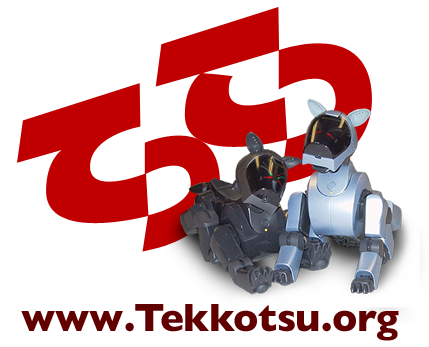

|
|
|

Dual-Coding Haiku:There are several sketch space/shape space pairs built in to Tekkotsu. The most basic is camera space, which corresponds directly to camera coordinates. Local space is based on egocentric (body-based) coordinates, and world space is based on allocentric (world) coordinates. A tool called the SketchGUI, which can be launched from the ControllerGUI, allows you to remotely examine any of these spaces and see the sketches and shapes that populate them.
Sketch space and shape space:
One has pixels, one has lines.
Back and forth we go.
-- Thomas Tuttle
|
|
|